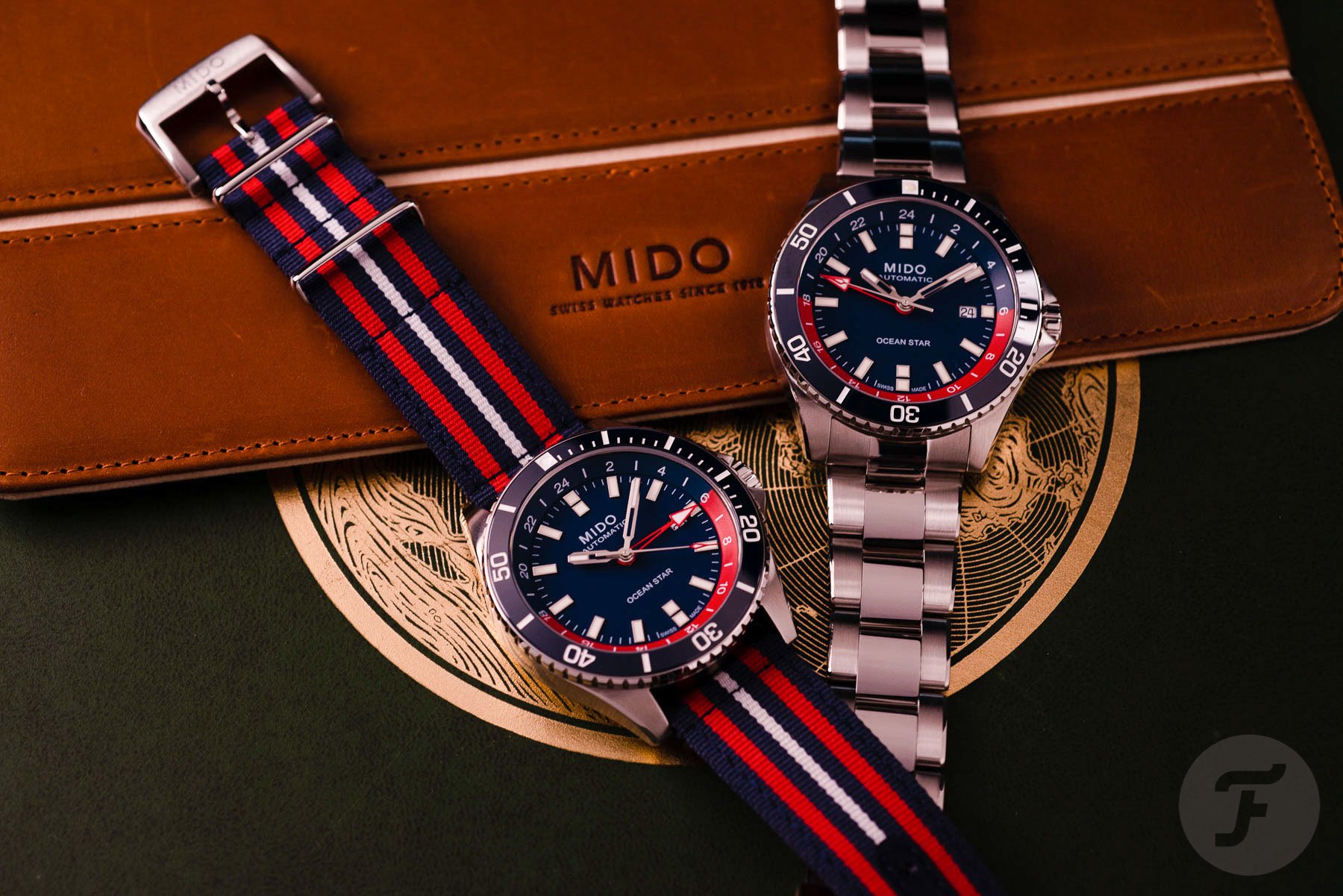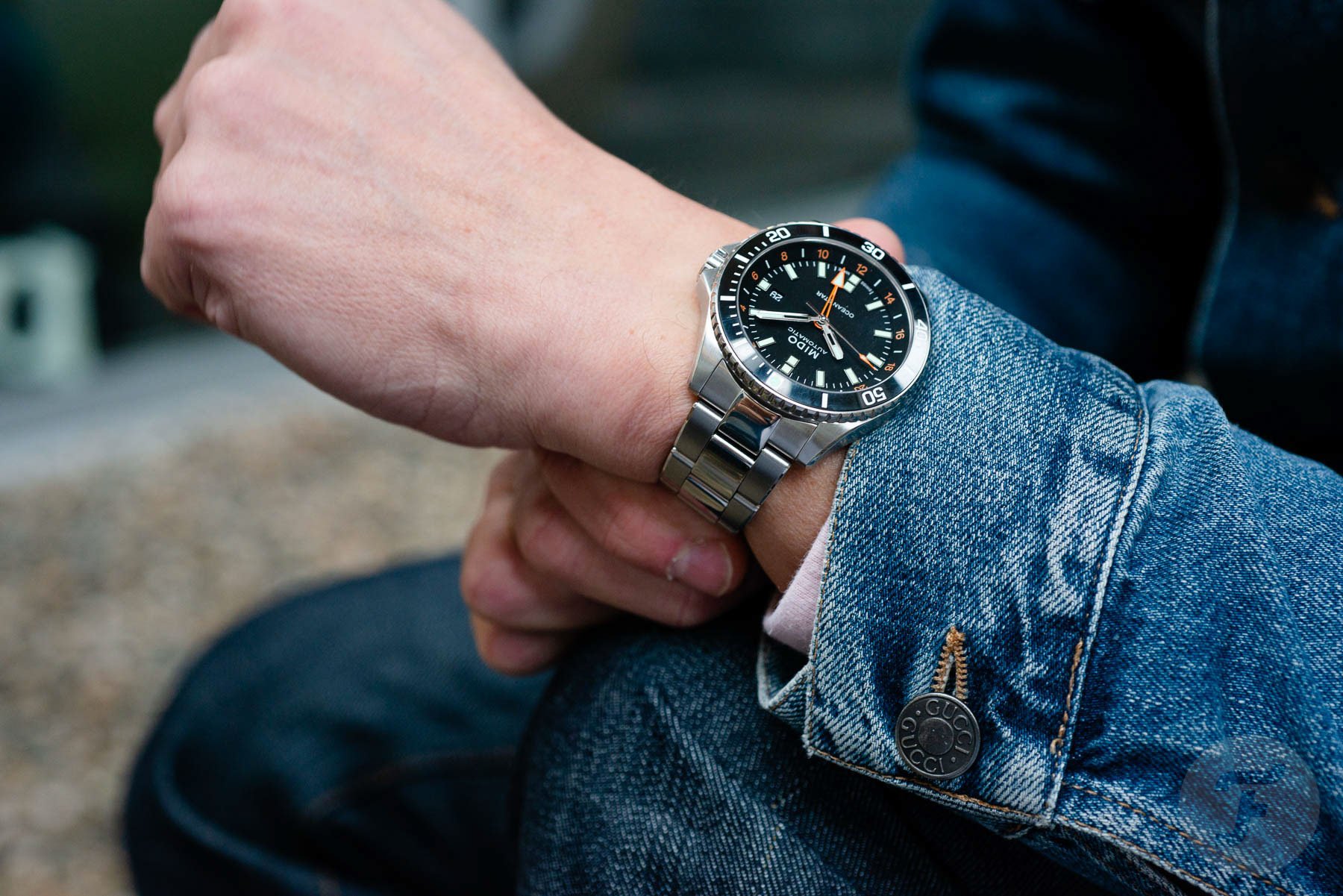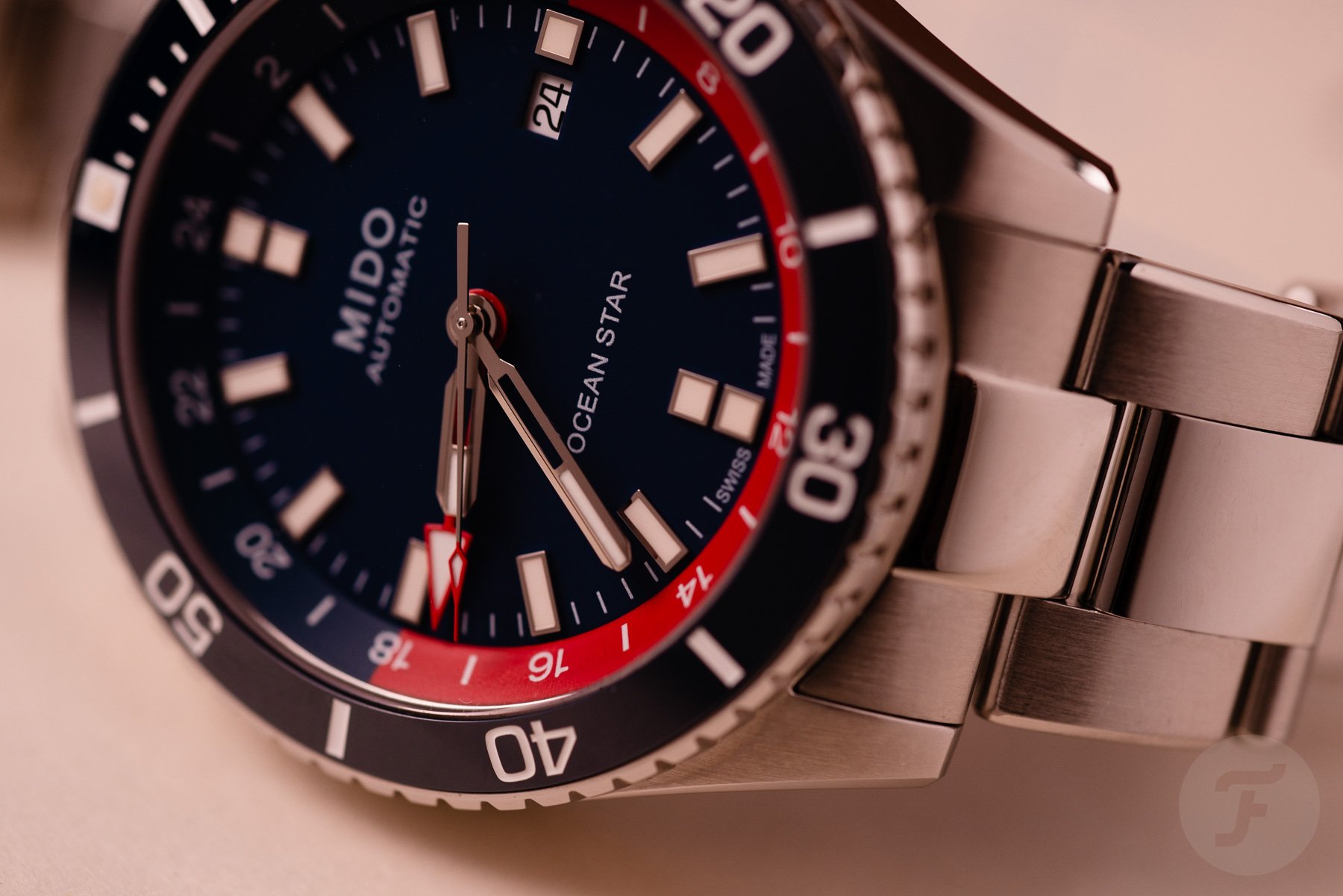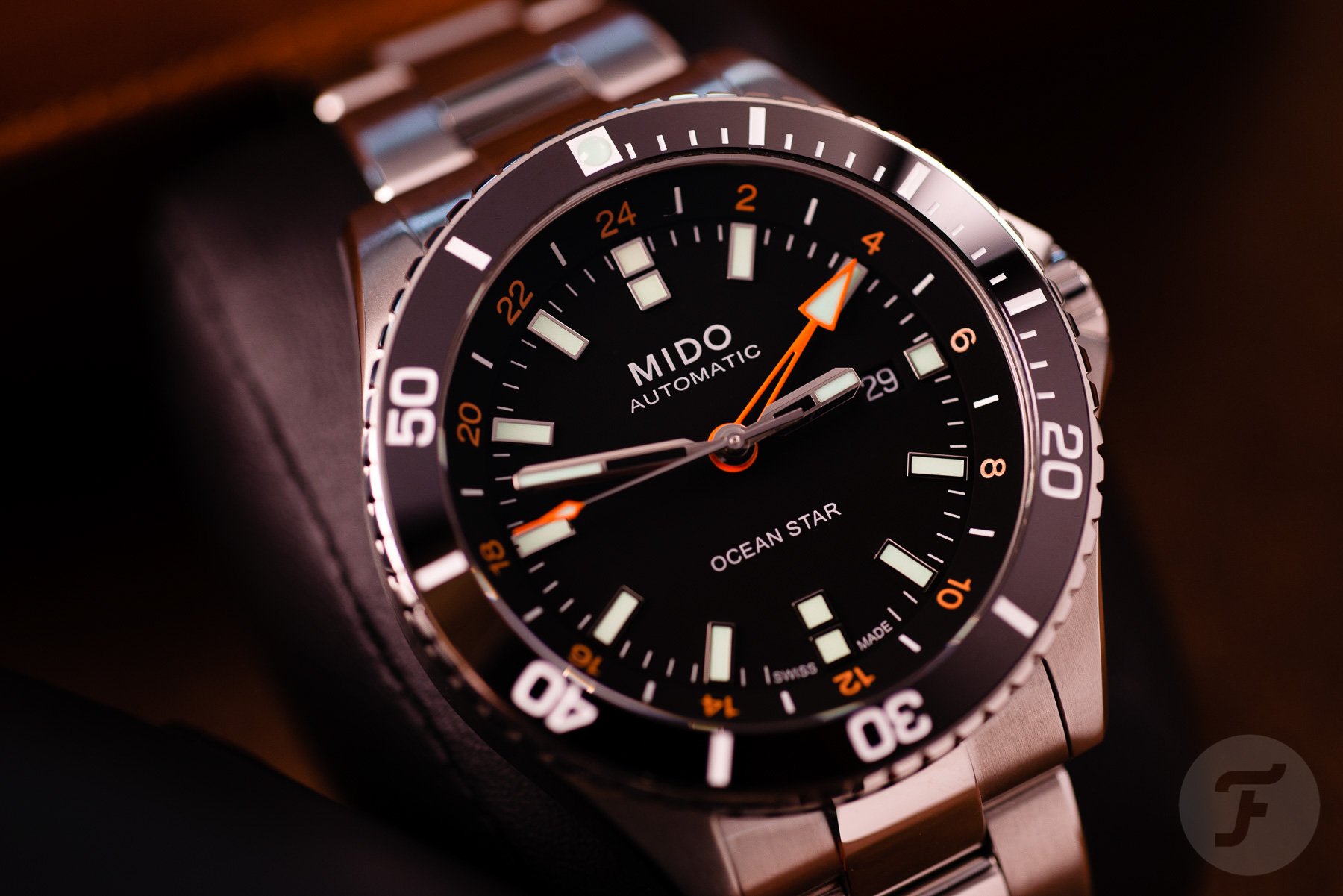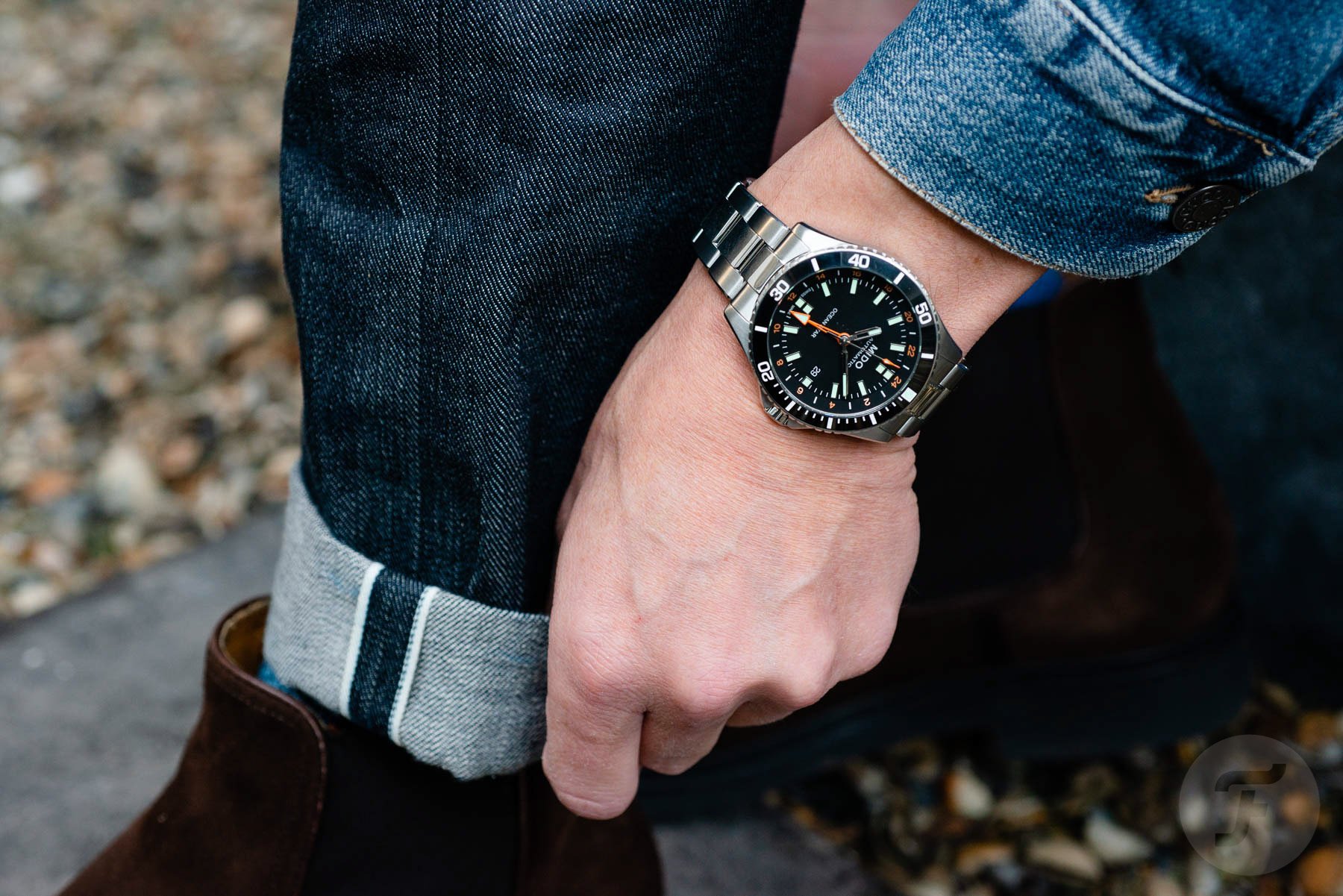A Double Hands-On With Two Mido Ocean Star GMT Watches
I occasionally wear a 1959 Mido Multifort. My dad lived and worked in Liberia around that time, and he bought it in Monrovia, the nation’s capital. He was actually torn between two watches. First, there was the Rolex GMT-Master worn by the Pan-Am pilots that flew back and forth to the former US colony, which, in 1847, became the first African republic to proclaim its independence. Then there was the aforementioned Mido Multifort. He picked the Multifort because of the movie ads that said “Mido; a watch to dine with, to court with, and to sport with.” If only my dad had hung out and drank with cool pilots more instead of going to the movies, I could now be wearing a vintage “Pepsi”. Instead, I have a Mido. I forgave my dad. But doing this hands-on with the new Mido Ocean Star GMT did stir up some carefully hidden feelings.
The vintage Multifort that I have and the modern Mido Ocean Star GMT are worlds apart. Sure, the 2022 model is a watch to dine with, to court with, and to sport with. but it’s first and foremost a legit diver… as well as a robust traveler. Indeed, the GMT function is a bonus for this 200m water-resistant Ocean Star dive watch. And if you want to see another example in this water-going line, I covered the very attractive and lightweight Ocean Star Titanium (M042.430.44.051.00) in an episode of Coffee Corner Watch Talk a while back.
The Mido Ocean Star GMT is a real diver AND a real GMT
The basis of the Mido Ocean Star GMT is a high-grade 316L steel 44 × 13.3mm case with a 22mm lug spacing. When the watch is on its three-link stainless steel bracelet with a solid folding clasp and diving extension, it comes in at 205 grams. The size and weight are completely proportional. Yes, I know that a 44mm case is not for everyone, but a 38mm GMT is not for everyone either. The XL Mido Ocean Star GMT is aimed at people who like things substantial. Let’s leave it at that.
Call or travel to Nagano
Of the two iterations that I tried on at Fratello HQ, maybe the best feature is the GMT function. Thanks to the use of an automatic Mido Caliber 80, which is based on the ETA C07.661, the Mido Ocean Star GMT is not a caller/office GMT, but rather, it is a flyer/real GMT. The quickest way to explain the difference between a caller and a flyer GMT is this: the caller GMT has an independent 24-hour hand, and a flyer GMT has an independent 12-hour hand. When you want to know if you can call your Grand Seiko guy in Nagano, you can make do with a caller GMT. If you want to visit him, though, you need a flyer GMT. It not only makes setting and reading the local time quicker, but the jumping 12-hour hand will also keep the date correct for the time zone you’re in.
Cheap flying tickets
Superior flyer GMT watches such as the famous Rolex GMT-Master II usually come at a substantial cost. Office GMT watches, on the other hand, are cheaper, but this Mido does bring the superior GMT function within reach of a large audience. The special edition in blue and red (M026.629.11.041.00) comes with an extra strap and has a price of CHF 1,300. The version in black and orange (M026.629.11.051.01) has a price of CHF 1,190. If you’re a “function over everything” kind of person, then this Mido Ocean Star GMT is hard to dismiss. But watches are not judged on instrumental qualities and price alone. It also has to meet certain criteria for aesthetics and comfort. And those criteria are, of course, highly personal.
Wearing the Mido Ocean Star GMT
Allow me to be straightforward: the 44mm Mido Ocean Star GMT is too big for my 18.5cm (~7.3″) wrist. On the bracelet, it’s also a bit too heavy for me. Some people do love a watch with some heft, and I get that, but it’s the size and weight combined that push this watch out of my comfort zone.
Don’t get me wrong; it’s a solid, well-built, well-finished, and nicely detailed piece. The dial has applied indexes, there’s a sapphire crystal with double-sided anti-reflective treatment over it, and around it, there’s a unidirectional diving bezel in steel and ceramic. And on the case back, you will find engraved indications for the world’s time zones. But despite all this, it’s just not for me. Is it because it just stirs up too many thoughts about the 1950s GMT-Master that could have been?
Maybe, but I can definitely see the appeal of the chunky Ocean Star GMT. If you’re not afraid of color and a little serving of “Pepsi”, the special edition in red and blue with an extra NATO strap in the same colors might be the one for you. The combination of a diving bezel and a two-tone 24-hour scale on the outside of the dial also brings a lot of visual highlights. The black-and-orange version is more conservative in design, but it’s also more timeless, maybe, and my favorite of the two. What do you think? Is the rugged, sophisticated, and functionally capable Ocean Star GMT the perfectly sized diver-traveler for you?
Please find more information about the different versions of the Ocean Star GMT on Mido’s official website.
Find and follow me at Lex Stolk • Instagram.

